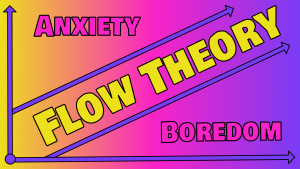Are you a game developer looking for ways to make your game more engaging and motivating? Have you heard of Maslow’s hierarchy of needs and wondered how it can be applied to gamification? In this article, we’ll explore Maslow’s pyramid gamification key points in the context of computer games, with examples of how they can be used to create more immersive and rewarding gaming experiences.
Overview
Maslow’s hierarchy of needs is a well-known psychological theory that describes the basic human needs that must be met in order to achieve fulfilment and self-actualization. The theory is often represented as a pyramid, with basic physiological needs at the base, followed by safety needs, love and belonging needs, esteem needs, and self-actualization needs at the top.
Gamification, on the other hand, is the application of game design principles to non-game contexts, such as education, marketing, and employee motivation. When applied to games, gamification can help to make them more engaging, motivating, and rewarding for players.
Maslow’s pyramid gamification combines these two concepts by using game design principles to address basic human needs and provide rewards for achieving goals related to those needs. In the context of computer games, this can help to create more immersive and rewarding gaming experiences for players.
Key Points
Let’s now explore the key points of Maslow’s pyramid gamification and how they can be applied to computer games.
Physiological Needs
The base of Maslow’s pyramid includes basic needs like food, water, shelter, and sleep. In the context of computer games, this can be translated to providing rewards such as points or items for completing tasks or achieving goals that are necessary for basic survival in the game.
For example, in the popular survival game “Minecraft,” players must gather resources like wood and stone to build shelter, tools, and weapons to protect themselves from monsters. By providing rewards for completing these tasks, such as unlocking new crafting recipes or gaining access to better equipment, the game motivates players to address their physiological needs in the game world.
Safety Needs
The second level of Maslow’s pyramid includes needs for safety and security, such as job security or protection from physical harm. In the context of computer games, this can be addressed by providing rewards for achieving safety-related goals, such as completing quests that involve protecting the player’s character from harm or achieving a high level of security for their base or castle.
For example, in the popular game “World of Warcraft,” players can join guilds and complete quests together to earn rewards and protect their characters from harm. By providing incentives for working together and achieving safety-related goals, the game fosters a sense of camaraderie and encourages players to address their safety needs in the game world.
Love and Belonging
The third level of Maslow’s pyramid includes social needs, such as the need for love, companionship, and a sense of belonging. In the context of computer games, this can be addressed by providing rewards for collaborating with others, participating in social activities, or contributing to a team goal.
For example, in the popular game “League of Legends,” players can join teams and compete against other players to earn rewards and climb the rankings. By providing incentives for working together and achieving social goals, the game fosters a sense of community and encourages players to address their love and belonging needs in the game world.
Esteem Needs
The fourth level of Maslow’s pyramid includes esteem needs, such as the need for recognition, achievement, and respect. In the context of computer games, this can be addressed by providing rewards for achieving challenging goals, mastering difficult skills, or earning a high rank or status in the game.
For example, in the popular game “Fortnite,” players can earn rewards such as new skins or emotes for achieving milestones like winning a certain number of matches or reaching a high rank in the game’s competitive mode. By providing incentives for achieving challenging goals and mastering difficult skills, the game encourages players to address their esteem needs in the game world.
Another example of addressing esteem needs in games is through player rankings and leader boards. Many games have systems in place to track and display players’ achievements, such as highest scores or fastest completion times. By providing a sense of competition and recognition for top-performing players, these games encourage players to strive for excellence and achieve a sense of accomplishment and respect within the game community.
Self-actualization
The top level of Maslow’s pyramid is self-actualization, which refers to the need for personal growth, creativity, and fulfilment. In the context of computer games, this can be addressed by providing opportunities for players to explore and experiment with game mechanics, create their own content, or engage in activities that allow for personal expression and development.
For example, in the popular game “Minecraft,” players can create their own structures, artwork, and custom game modes using the game’s building tools and mods. By providing a sandbox environment that encourages creativity and personal expression, the game fosters a sense of personal growth and fulfilment for players.
Another example of addressing self-actualization needs in games is through skill-based progression systems. Many games have complex systems for levelling up skills or unlocking new abilities, which provide players with a sense of progression and mastery over the game mechanics. By providing opportunities for players to develop and showcase their skills, these games encourage personal growth and fulfilment.
Summary
In conclusion, Maslow’s pyramid gamification offers a framework for game developers to create more engaging and rewarding gaming experiences by addressing basic human needs through game design principles. By providing rewards for achieving goals related to physiological needs, safety needs, love and belonging needs, esteem needs, and self-actualization needs, games can motivate and engage players on a deeper level.
Whether through survival mechanics, collaborative play, competitive rankings, creative expression, or skill-based progression, games can address a wide range of human needs and provide a sense of fulfilment and satisfaction for players. By understanding and applying the principles of Maslow’s pyramid gamification, game developers can create games that are not only fun and entertaining but also meaningful and impactful in players’ lives.




